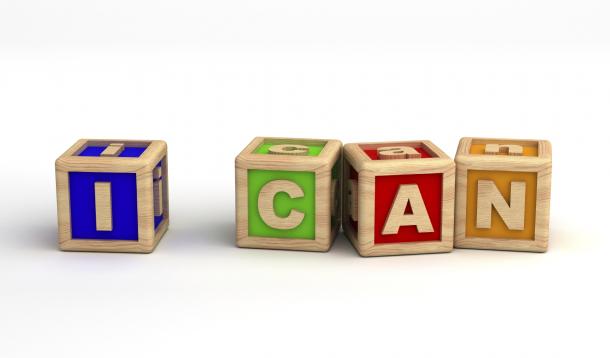
I distinctly remember my first interaction with a toddler well before I became a parent. Her mother needed to run out to do some errands so I agreed to stay with the 13-month old girl for a couple of hours. As the door closed behind her mom, the girl and I were left staring at each other, both not sure what to do.
She made a motion to stand so I lifted her from her sitting position to a standing one and held out my arms beside her as she wobbled from one piece of furniture to the next. Each time she stumbled, I’d catch her and get her set on her feet again. After doing this for about an hour, I had a screaming backache and she was happy as a lark, having someone catch her before she hit the ground.
A short time after my son was born, I was recounting my happy, yet backbreaking time with this other child when a wise mother said, “How are children going to learn to walk if you keep catching them when they fall?” She was right! The only think that little girl learned was how to throw her arms up and look at me when she wanted to get up: not how to actually get herself on her feet. My good intentions were actually hampering her walking ability.
This moment has really stuck with me as my children have grown older. The idea that helping too much can actually hold our children back was solidified when I read Jessica Lahey’s book The Gift Of Failure. In it, Lahey states that, “Every time we rescue, hover, or otherwise save our children from a challenge, we send a very clear message: that we believe they are incompetent, incapable, and unworthy of our trust.” She goes on to say, “Further, we teach them to be dependent on us and thereby deny them the very education in competence we are put here on this earth to hand down.”
The trick is to let go of our children just enough to experience mistakes, challenges or suffering in order to grow wise but not so much to permanently break them.
I had the opportunity to meet Jessica Lahey at a recent conference. From left to right: Jessica Michaelson, PhD, me, Katherine Stone (from Postpartum Progress) and Jessica Lahey.
I have found that establishing this balance is easier when we focus on these five points:
Learn about “core beliefs” and how they affect a child’s perception of themselves, the world, and other people. When we know that jumping in too quickly can hamper with their being capable beliefs, we can feel better about taking a step back. We know that taking this step is being done with support and trust.
Trying to remove all of our children’s obstacles hurts their ability to learn from their mistakes and it is also a HUGE ENERGY DRAIN. The output required to micromanage our children is better spent trying to fulfill their important missing needs: by filling their buckets so full that they can handle when others put holes in their tank.
Mistakes, conflict, challenges, and disappointment happen. Preventing these experiences does not give our children the opportunity to practice what to do in these situations. Even with toddlers, we can start coaching them through disappointment by not giving into demands. For example, when your three year-old throws himself on the ground because you stirred the yogourt wrong (I feel for you), rather than getting a new yogourt, which will teach him that freaking out is a successful strategy, your calm words will help him realize that disappointment happens. Saying something like, “You are mad because the yogourt isn’t in the bowl the way you like it. That can’t be changed. (Soft language and touches on the back) I’m sorry this is hard.” Stay calm and supportive until he calms down.
Providing our children with the care he or she needs, whether that comes from a trained professional or ourselves, shows our children that when things head south, we have options to try and people to lean on. I do post free parenting information on my Facebook page if you'd like to read more.
Helping your children reach a point of futility (that no matter what they do, the difficult thing can’t be undone) helps them engage their problem-solving center. Each time hard moments happen, after acknowledging the feelings association with the experience, we can grow positive brain connections by showing our children how to consider options for a solution. As Peg + Cat sing, “There’s more than one way to solve a problem.”
I know this can feel really hard, but it’s important to separate our personal triggers from our child’s upset. When our children are hurt, it is common for us to have memories of similar experiences that compound the sad, angry, or scared feelings. As much as you can, put your focus on being able to empathize with your child and remind yourself that although you are a part of it, this is your child’s journey.
Lahey is right: we need to “be patient, and trust in our kids,” as they try different things when tough times happen. We also need to heed Richard Russo’s quote, which Lahey included: “Great books are not flawless books.”

![]() RELATED: Parents, Stop Saying "Okay," Okay?
RELATED: Parents, Stop Saying "Okay," Okay?